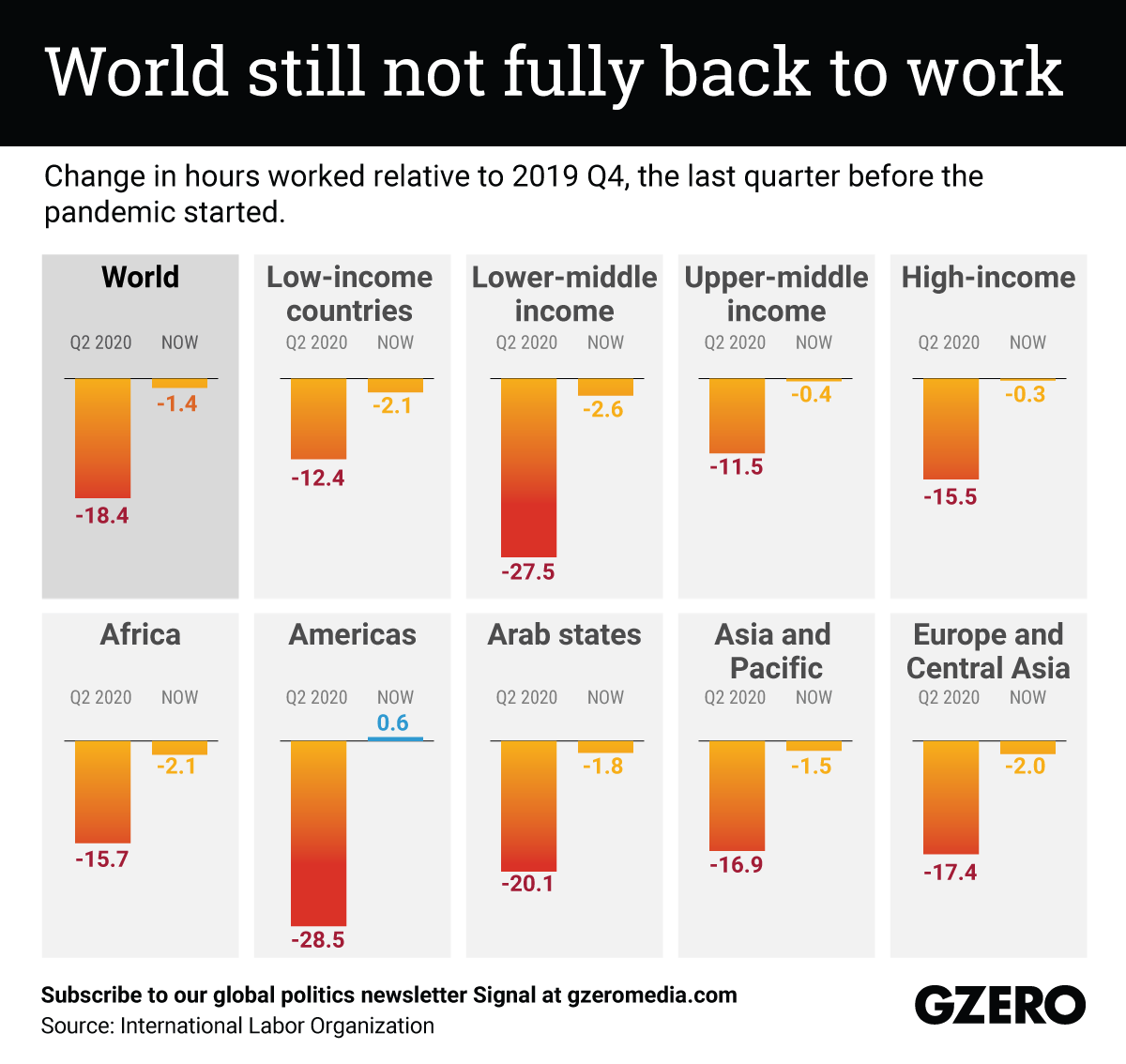November 16, 2022
It’s been almost three years since the COVID pandemic swung a wrecking ball through our societies, our economies, and our workplaces. But even now, with the most acute phase of the crisis behind us, many aspects of life still aren’t back to what they were in the B.C. (Before Coronavirus) era. One great example is the hours worked in our economies. When the pandemic struck, lockdowns and other restrictions caused the number of hours worked on a quarterly basis around the world to plunge by nearly 20% compared to the final quarter of 2019, the baseline for “last moments of pre-pandemic normalcy.” But since then, the world as a whole still hasn’t gotten back to pre-pandemic levels of hours worked — we’re still almost 1.5% below them. Lower-income countries are struggling more than rich ones to get back to where they were, and there is only one region of the world that shows more hours worked now than before the pandemic — can you guess which one it is?
More For You
Global conflict was at a record high in 2025, will 2026 be more peaceful? Ian Bremmer talks with CNN’s Clarissa Ward and Comfort Ero of the International Crisis Group on the GZERO World Podcast.
Most Popular
Think you know what's going on around the world? Here's your chance to prove it.
Indian Prime Minister Narendra Modi isn’t necessarily known as the greatest friend of Muslim people, yet his own government is now seeking to build bridges with Afghanistan’s Islamist leaders, the Taliban.
French President Emmanuel Macron, German Chancellor Friedrich Merz, Ukrainian President Volodymyr Zelenskiy, U.S. Special Envoy Steve Witkoff and businessman Jared Kushner, along with NATO Secretary-General Mark Rutte and otherEuropean leaders, pose for a group photo at the Chancellery in Berlin, Germany, December 15, 2025.
Kay Nietfeld/Pool via REUTERS
The European Union just pulled off something that, a year ago, seemed politically impossible: it froze $247 billion in Russian central bank assets indefinitely, stripping the Kremlin of one of its most reliable pressure points.
© 2025 GZERO Media. All Rights Reserved | A Eurasia Group media company.
